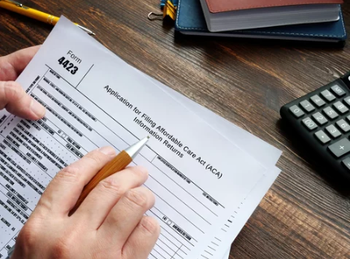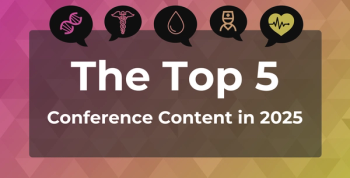
Stronger Frameworks Needed to Implement CGM Use at Hospital Discharge
Continuous glucose monitor (CGM) use as part of a telemedicine program in patients with type 2 diabetes transitioning out of a hospital setting and to a different diabetes therapy was evaluated in this new open-label study.
More work is needed to incorporate the use of
In particular, introducing patients to a new form of diabetes therapy while recovering from an acute T2D episode, particularly diabetes technology with which they are unfamiliar, needs to first consider the human factors that may influence the new treatment uptake—including language, cognitive comorbidities, and patient disengagement—and thereby affect hospital readmission.
“There is little information on safe transitioning from hospital back to the community for patients who have had diabetes therapies adjusted in hospital, and it is unclear whether newer technologies may facilitate this process,” the study authors wrote. “Our aim was to determine whether offering CGM on discharge would be acceptable and if CGM initiated on hospital discharge in people with T2D would reduce hospital representations at 1 month.”
Prince of Wales Hospital in Australia served as the location for this study, which actually was terminated prior to randomization due to poor recruitment; just 19 of the original 101 potential participants completed the study, and they were recruited between October 1, 2019, and March 20, 2020. Still the outcomes data provided valuable insight to the authors.
The overall median baseline glycated hemoglobin was 10.9% (6.5%-14.8%), and this dropped close to 27% by the 3-month mark following discharge among 17 patients who had these data available, to 8.0% (5.0%-10.8%). Two patients required hospitalization in the month after their study participation began.
Care in the control group consisted of clinic reviews 2 weeks and 3 to 4 months after discharge, and care in the intervention group included the usual care regimen plus provision of a glucose monitoring system. The median (IQR) patient age was 68.5 (32-75) years, and 74% were male.
All study participants expressed their satisfaction with their glucose monitoring devices, with 84% saying they were very satisfied.
Among the patients who declined study participation (n = 82), the authors discovered the following:
- 38% felt overwhelmed/stressed at having to learn a new task during the discharge process
- 32% were not interested
- 18% did not want to attend the follow-up visits
- 7% were discharged after the trial was closed
- 4% decided to acquire a CGM on their own
Among the factors the authors believe may have impeded their study, and that may hinder implementation of future telemedicine programs among persons requiring intensive glucose management, are cognitive and mental health barriers, limited access to technology among older adults, and the stress that may infuse transitioning home following an acute illness episode.
One solution they propose is to provide educational technical material that is both culturally and socially relevant, in particular because they were unable to decipher the reasons for their low recruitment. Needing to recover from an acute illness, suffering from chronic disease burnout, and the older age of participants were proposed as reasons.
“Although telehealth has the potential for enhanced clinical care, our negative study demonstrates the difficulties in implementing new technologies in a cohort of older adults with chronic illness after acute hospitalization,” the authors concluded. “In embracingthe promise of telemedicine including remote monitoring, furtherresearch on addressing human factors, to ensure equity, isrequired.”
Reference
Depczynski B, Poynten A. Acceptance and effect of continuous glucose monitoring on discharge from hospital in patients with type 2 diabetes: open-label, prospective, controlled study. JMIR Diabetes. Published online May 9, 2022. doi:10.2196/35163
Newsletter
Stay ahead of policy, cost, and value—subscribe to AJMC for expert insights at the intersection of clinical care and health economics.









































